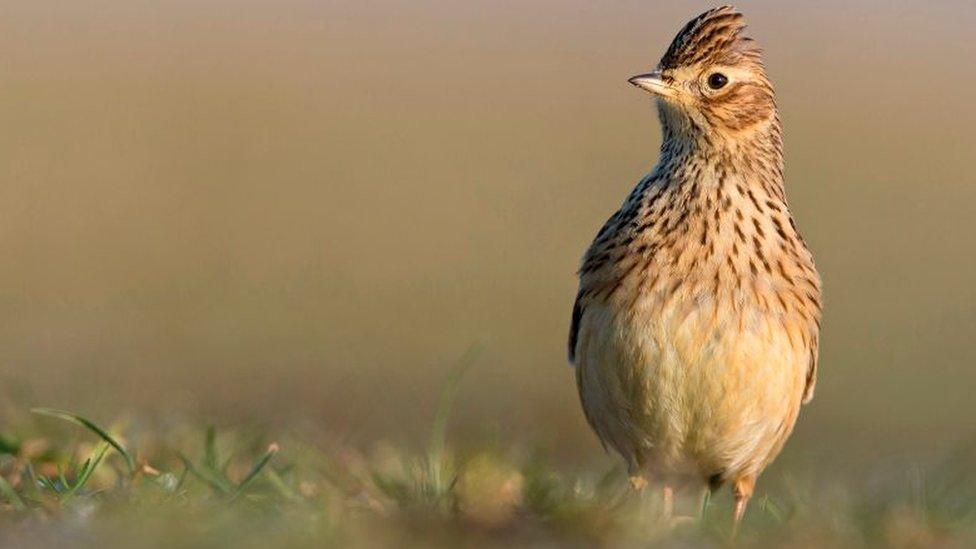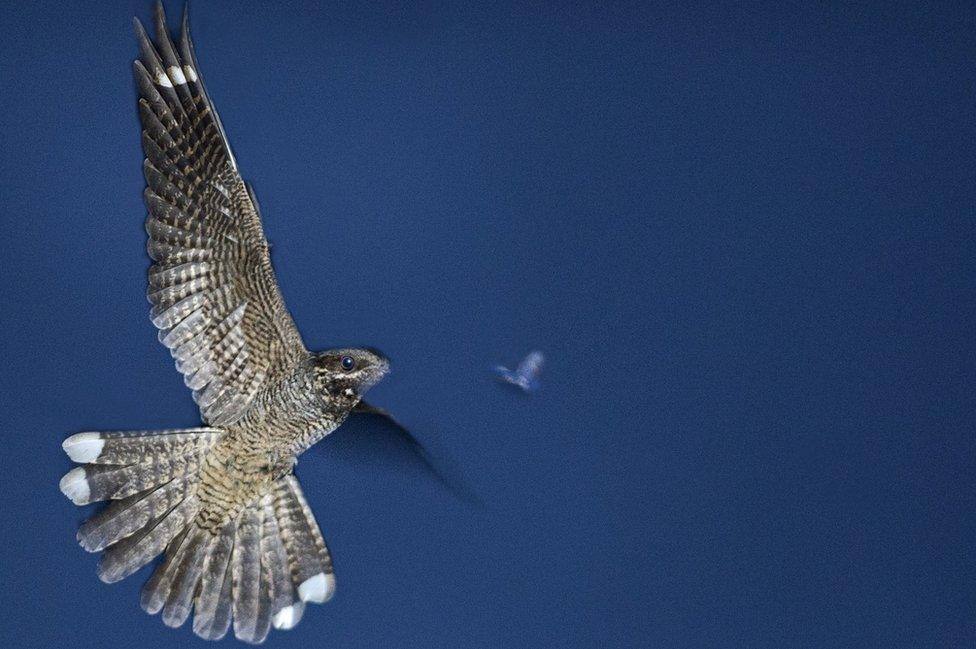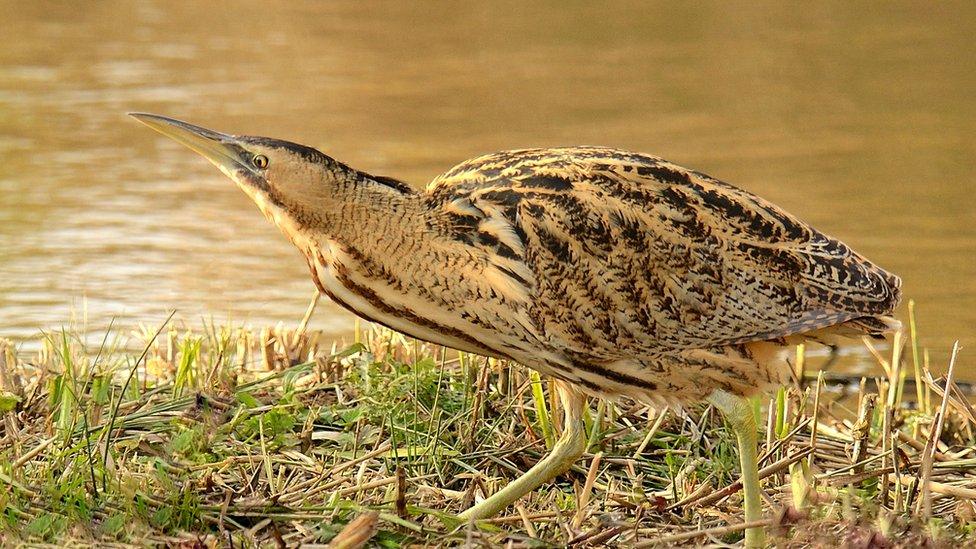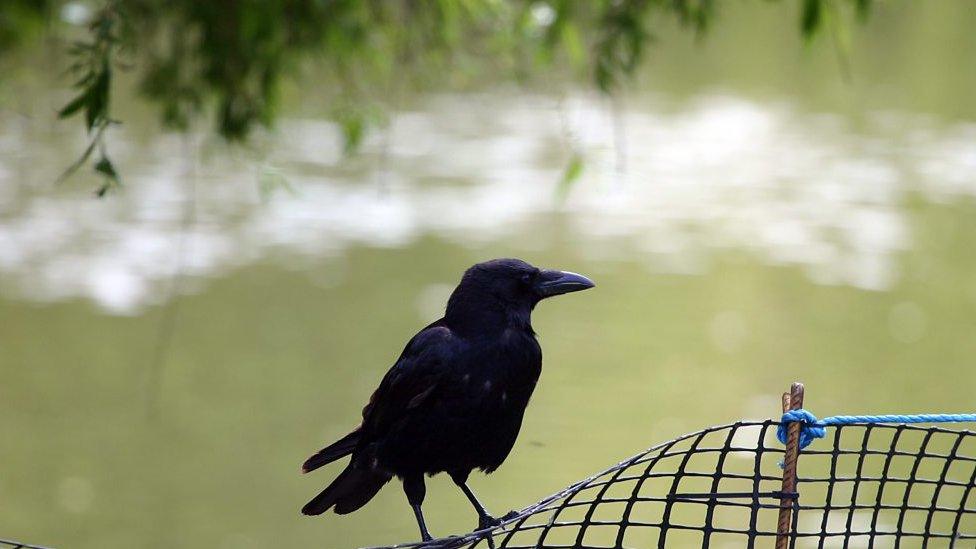Wanstead Flats walkers urged to respect ground-nesting birds
- Published

If adult birds are scared away it leaves ground-nesting chicks vulnerable (library picture)
Some of the UK's rarest birds are preparing to breed in Epping Forest, with areas roped off from walkers.
Skylarks, Nightjars and Dartford Warblers all nest on the ground or in low bushes, which leaves them vulnerable to being disturbed.
The Skylarks on Wanstead Flats are the closest returning population of ground-nesting birds to central London, a City of London committee said.
Walkers are also asked to make sure their dogs are under control.
Wanstead Flats is a large area of open grassland in the south of the forest and is a Site of Special Scientific Interest (SSSI).

Skylarks, Nightjars and Dartford Warblers

Skylarks have a small crest, which can be raised when the bird is excited or alarmed
The Skylark is a small brown bird, larger than a sparrow but smaller than a starling.
It is streaky brown with a small crest - which can be raised when the bird is excited or alarmed - and a white-sided tail.
The wings also have a white rear edge, which is visible in flight.
It is known for its display flight, vertically up in the air. Recent and dramatic population declines make it a red list species, external.

Nightjars can be seen hunting for food at dusk and dawn
Nightjars are nocturnal and can be seen hunting for food at dusk and dawn.
They have pointed wings and long tails, similar to a Kestrel.
They have a supernatural reputation thanks to their silent flight and their mythical ability to steal milk from goats - their Latin name Caprimulgus translates as goatsucker.

The Dartford Warbler will perch on top of a stem to sing
The Dartford Warbler's population crashed to just a few pairs in the 1960s, but has gradually recovered since then.
It will perch on top of a stem to sing, but is more often seen as a small flying shape bobbing between bushes.
The bird was originally known by its country name, the Furze Wren. It was formally "discovered" in Bexley - when two were shot on the common and given to a naturalist, John Latham.
Dr Latham ruffled the feathers of the locals by registering the species not after Bexley but after Dartford, where he had his medical practice.
There is still a Furze Wren in Bexleyheath, a Wetherspoon pub.

Chairman of the Epping Forest and Commons Committee, Ben Murphy, said of the temporary cordons: "Some people may think these [cordoning off] measures go too far - but the reality is that these birds play a critical role in protecting the forest and maintaining a balanced ecosystem.
"They are pest controllers, pollinators and seed dispersers.
'Incredibly promising'
"We want everyone to enjoy the abundance of nature found in 'the green lungs of London', which is why we are urging visitors to respect these birds by staying out of the clearly defined areas."
If adult birds are scared from nests, it leaves any chicks vulnerable - and accidental trampling can destroy the habitat in just one step.
Mr Murphy added: "The protective measures we put in place last year resulted in at least four young larks fledging.
"There were 11 skylarks there at the end of last season and we have seen seven individuals so far, which is incredibly promising."

Listen to the best of BBC Radio London on Sounds and follow BBC London on Facebook, external, X, external and Instagram, external. Send your story ideas to hello.bbclondon@bbc.co.uk
- Published23 November 2023

- Published20 June 2023
